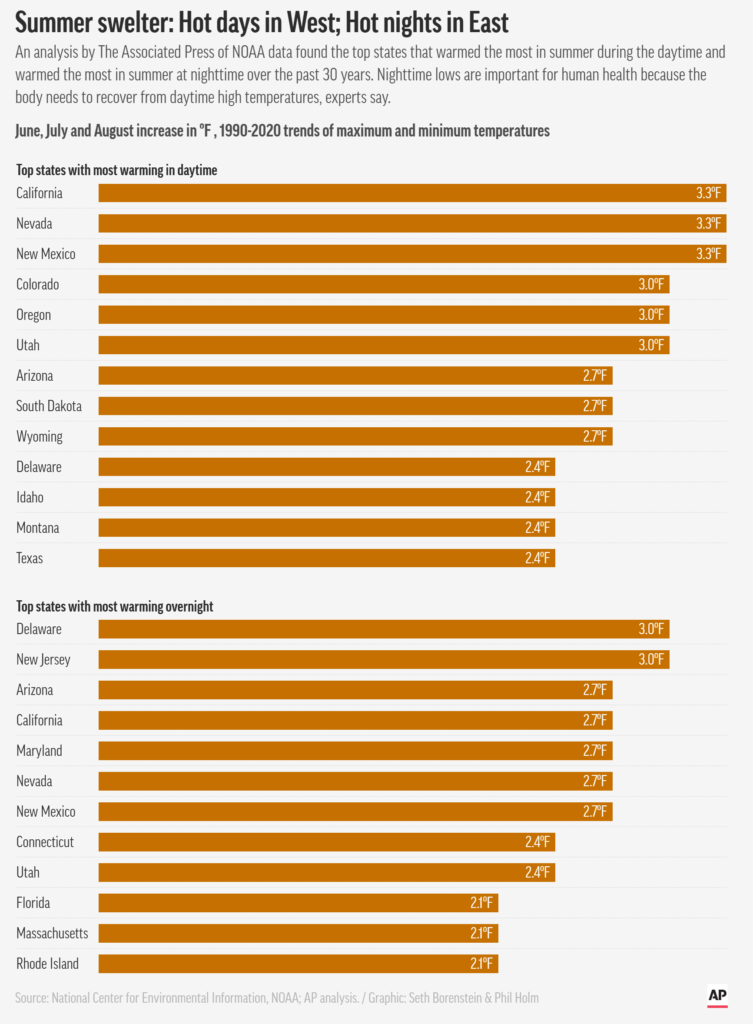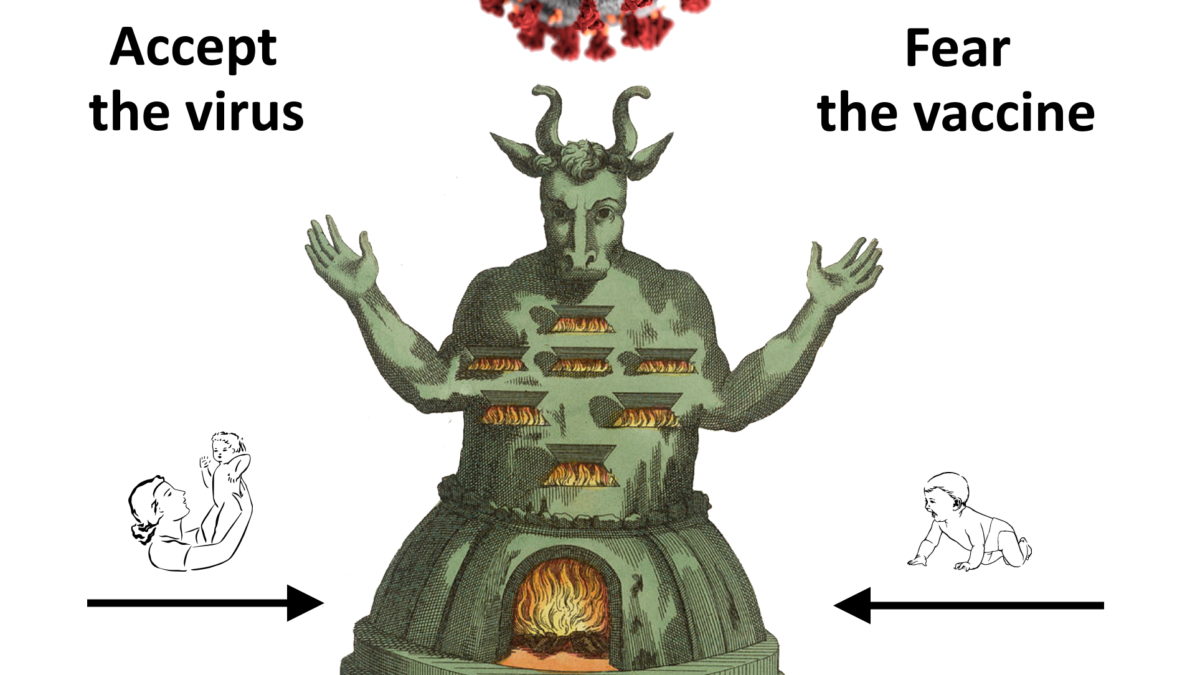Summer swelter trend: U.S. West gets hotter days, East hot nights – “Hotter summers for the broader region are here to stay”

By Seth Borenstein
4 July 2021
(AP) – As outlandish as the killer heatwave that struck the Pacific Northwest was, it fits into a decades-long pattern of uneven summer warming across the United States.
The West is getting roasted by hotter summer days while the East Coast is getting swamped by hotter and stickier summer nights, an analysis of decades of U.S. summer weather data by The Associated Press shows.
State-by-state average temperature trends from 1990 to 2020 show America’s summer swelter is increasing more in some of the places that just got baked with extreme heat over the past week: California, Nevada, New Mexico, Arizona, Utah, Oregon, and Colorado.
The West is the fastest-warming region in the country during June, July and August, up 3 degrees on average since 1990. The Northwest has warmed nearly twice as much in the past 30 years as it has in the Southeast.
That includes Portland, Oregon which set a record 116-degree high that was 3 degrees warmer than temperatures ever recorded in Oklahoma City or Dallas-Fort Worth.
Although much of the primary cause of the past week’s extreme heat was an unusual but natural weather condition, scientists see the fingerprint of human-caused climate change, citing altered weather patterns that park heat in different places for longer periods.

“The ridiculous temperatures in the Pacific Northwest may, on one hand, be considered a black swan (ultra-rare) event, but on the other hand are totally consistent” with long-term trends, said meteorologist Judah Cohen of the private firm Atmospheric and Environmental Research. “So I am not going to predict when is the next time Portland will hit 116 but I believe hotter summers for the broader region are here to stay.” …
The Midwest is warming slower during the summer than either coast. That’s because stalled low pressure areas often drive cooler air into the Great Lakes region, said North Illinois University climate scientist Victor Gensini.
Water explains the big difference between western and eastern heat trends, scientists said.
“In western states where drought has been expanding and intensifying during the past decade, soil moisture has been declining. Dry soil heats up faster than moist soil during the day because all the solar energy goes into heating rather than into evaporating moisture,” said Jennifer Francis, a climate scientist at the Woodwell Climate Research Center. “Dry soil also cools off faster at night.”
That’s partly why the West, which is getting drier by the decade and is mired in a 20-year megadrought, is seeing those crazy triple digit daytime temperatures.
The East is getting wetter by the decade, NOAA records show, and the East Coast is seeing its biggest warming increase at night. The overnight lows in New Jersey and Delaware have warmed 3 degrees since 1990, the biggest increases in the nation. [more]
Summer swelter trend: West gets hotter days, East hot nights


